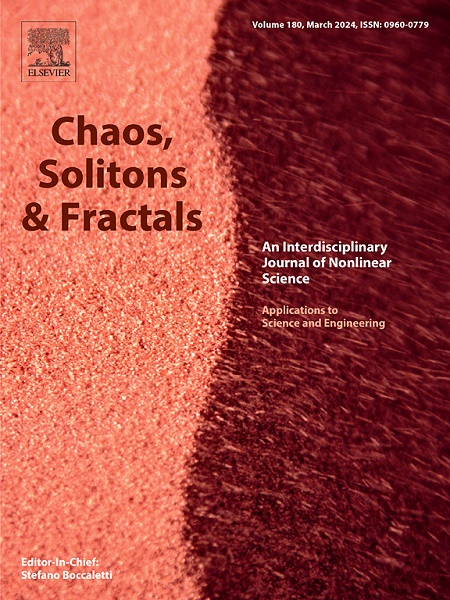Prediction and prevention of non-Markovian epidemic spreading in coupled system
IF 5.6
1区 数学
Q1 MATHEMATICS, INTERDISCIPLINARY APPLICATIONS
引用次数: 0
Abstract
Considering the transportation of goods and movement of people between social zones and lockdown zones through channels such as medical activities and express deliveries, we propose a non-Markovian disease transmission model in a coupled system. Simulation and prediction results for COVID-19 spreading during the lockdowns of cities such as Shanghai, Beijing and Jilin in 2022 demonstrate that the coupled-system model exhibits a superior short-term and long-term predictive capacity of epidemic situations, compared with the conventional single-system model. In evaluation of the suppression effect of interventions in social zones, it is found that reducing the inter-subsystem coupling strength can contain epidemic outbreaks more effectively than the population size in social zones. Additionally, enhancing the frequency of nucleic acid testing in social zones can observably mitigate the outbreaks. A twice a day PCR frequency for social zone personnels is expected to result in a theoretical outbreak size that is approximately half of the actual outbreak size. Our work provides new insights into the transmission mechanism of the disease under urban lockdowns and offers a scientific basis for the development of effective prevention and control strategies.
耦合系统中非马尔可夫流行病传播的预测与预防
考虑到社会隔离区和封锁隔离区之间的货物运输和人员流动,通过医疗活动和快递等渠道,我们提出了一个耦合系统中的非马尔可夫疾病传播模型。对2022年上海、北京、吉林等城市封城期间新冠肺炎疫情传播的模拟和预测结果表明,与传统的单系统模型相比,耦合系统模型对疫情的短期和长期预测能力更强。在社会区域干预抑制效果评价中发现,降低子系统间耦合强度比降低社会区域人口规模更能有效遏制疫情的爆发。加强社会区域核酸检测频率可明显缓解疫情。社区区工作人员每天两次的PCR频率预计将导致理论爆发规模约为实际爆发规模的一半。本研究对城市封锁条件下的疾病传播机制有了新的认识,为制定有效的防控策略提供了科学依据。
本文章由计算机程序翻译,如有差异,请以英文原文为准。
求助全文
约1分钟内获得全文
求助全文
来源期刊

Chaos Solitons & Fractals
物理-数学跨学科应用
CiteScore
13.20
自引率
10.30%
发文量
1087
审稿时长
9 months
期刊介绍:
Chaos, Solitons & Fractals strives to establish itself as a premier journal in the interdisciplinary realm of Nonlinear Science, Non-equilibrium, and Complex Phenomena. It welcomes submissions covering a broad spectrum of topics within this field, including dynamics, non-equilibrium processes in physics, chemistry, and geophysics, complex matter and networks, mathematical models, computational biology, applications to quantum and mesoscopic phenomena, fluctuations and random processes, self-organization, and social phenomena.
 求助内容:
求助内容: 应助结果提醒方式:
应助结果提醒方式:


